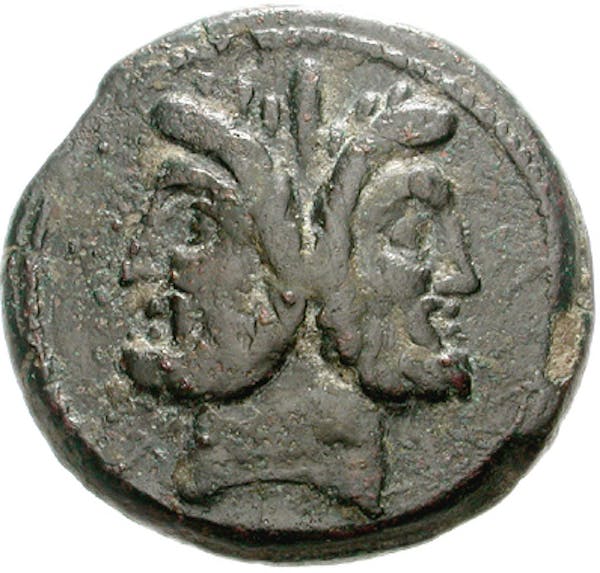The Story



Janus is the Roman god of transitions, often depicted with two faces—one looking to the past and the other to the future. Known as the Gatekeeper, he symbolized the passage of time, change, and duality. Janus oversaw beginnings and endings, making him a powerful figure in ceremonies and rituals.
"As the spirit of doorways and arches, Janus is the perfect model for transitions. When passing through a door, one is simultaneously leaving and entering" (Pearce-Moses, 2006).
In Archives
Perhaps the most recognized as patron of Archivists, Janus exemplifies a strong duality in the purpose of the profession. While in the modern day we may hear the term "two-faced" and "gatekeeper" and think that we are dealing with a class A-bully, a kin to Regina George (lets not get into the discussion of the Burn Book as a cultural record but we could...), in the context of Janus these descriptors represent his greatest strengths. Janus, and archivists, balance two divergent perspectives. They safeguard historical records while antcipating the needs and access of the future. The ongoing push toward digitization is a perfect illustration of this dual focus. Archives are digitizing their collections not just to preserve fragile materials but to meet the expectations of a digitally connected world.
Community archives are another way archivists embrace this duality. By working directly with communities to preserve their histories, archivists honor the past while ensuring these stories remain part of the cultural record. This work reflects Janus's role as a guide through transitions, helping communities bridge the gap between memory and preservation.
About Archivists
Pictured on the leftmost coin above, there is a representation of the temple of Janus which once stood in Roman Forum. Its creation came about as a symbol of peace. As a god of transition, Janus's temple was used as an index of peace and war. When the doors were left open, it indicated that the empire was at war, but when the doors were closed, it meant the people could be at peace. This simple yet powerful structure served as a physical marker of transitions, reflecting the dual nature of Janus as both the guardian of conflict and the harbinger of calm. The closed doors on this coin are a celebration of peace, a time when the empire could pause, reflect, and restore itself. This duality of war and peace, turmoil and resolution, is deeply tied to Janus’s essence and provides a meaningful lens for understanding archivists.
For archivists, times of unrest often demand that the metaphorical doors remain open. When societies face upheaval—whether due to war, political shifts, or social movements—archives become critical spaces for preserving the truth, documenting voices that might otherwise be silenced, and offering continuity amid chaos. Janus’s double sight—one face looking to the past and the other to the future—reminds archivists of their dual responsibility.
Archivists must ground themselves in this transitional role, just as the Temple of Janus served as a grounding symbol for Rome. The work of an archivist is rarely static; it requires constant adaptation to the shifting needs of the societies they serve. In times of stability, archivists may focus on reflection and preservation, akin to the temple’s closed doors. But in times of unrest, they must embrace the open-door approach, acting as stewards of transparency, resilience, and accountability.
Janus teaches archivists to hold space for both the uncertainty of the future and the clarity that comes with hindsight. His temple’s symbolism underscores the importance of readiness and adaptability—qualities that are just as vital to the archival profession today as they were to the Roman Empire thousands of years ago.
